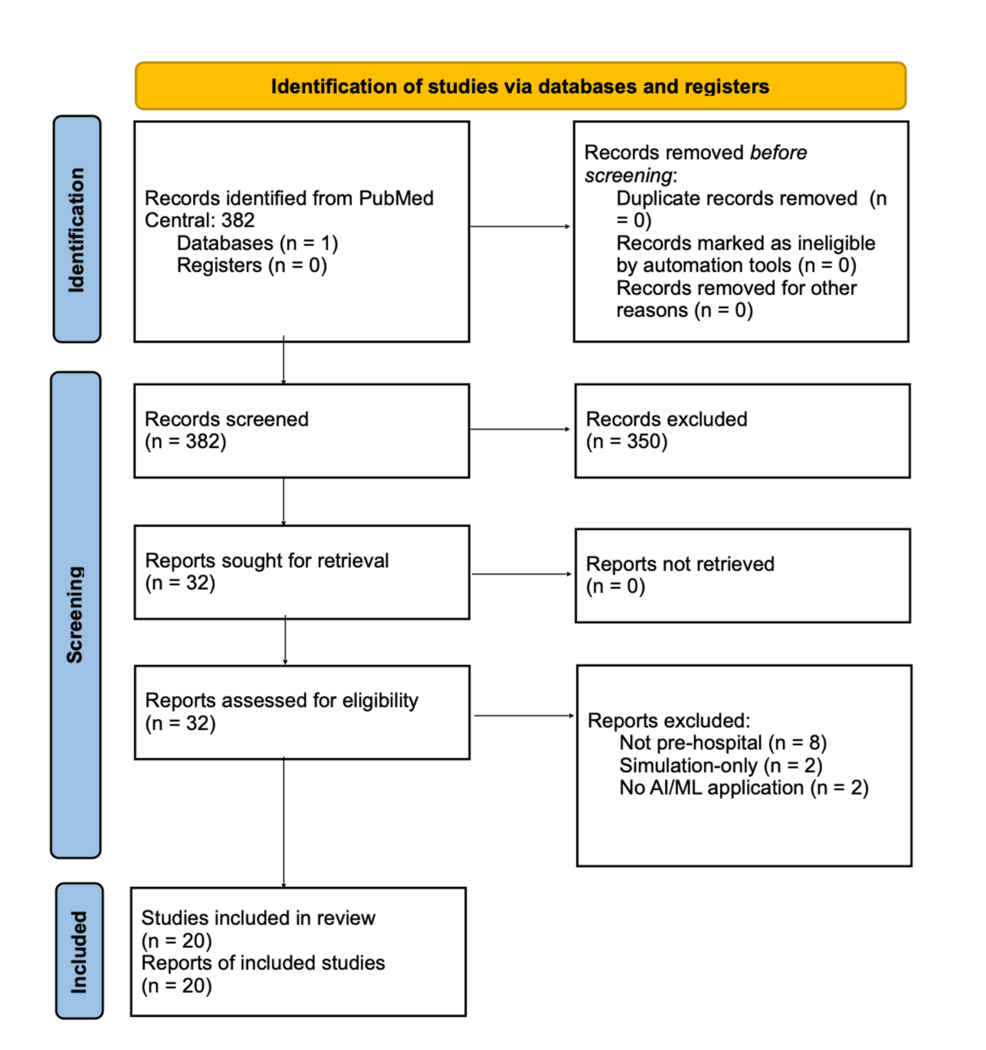Introduction
Inflammatory bowel disease is a group of chronic nonspecific intestinal diseases, including ulcerative colitis (UC) and Crohn’s disease (CD), characterized by remission and relapse. The current incidence of IBD in Asia is 1.4 cases per 100,000.1 Among the Asia Pacific Crohn’s and Colitis Epidemiologic Study countries, the incidence of IBD in India is 9.3 per 100,000 person-years and in China is 3.3 per 100,000.1 Gut microbiota, immune response, external environment and individual genetic susceptibility are closely related to the occurrence and development of IBD.2,3 IBD is currently incurable and has a tendency to recur and exacerbate. Effective monitoring and evaluation of the disease is required, which helps physicians to adjust treatment plans in a timely manner based on disease activity, lesion severity, complications, and patient response to drugs. Endoscopic assessment is considered to be the “gold standard” for evaluating intestinal lesions and plays a very important role. However, endoscopy is an invasive procedure with certain risks, which often makes patients feel uncomfortable and is expensive. Frequent endoscopy is painful for patients. In clinical practice, C-reactive protein (CRP) and erythrocyte sedimentation rate (ESR) are the most commonly used biomarkers for monitoring IBD activity. However, the two are easily affected by various factors in the body, and are also elevated in infection, cancer, and cardiovascular disease.4 Fecal calprotectin (FC) has begun to be used in the assessment of intestinal inflammation in some regions. However, due to the fact that there is no uniform standard for its cut-off value, and the technical conditions of detection FC are limited, it is still not widely used in medical institutions. Therefore, we need to find a more widely applicable and easily detectable biomarker to monitor the activity of the disease.
Studies have shown that inflammation and lipid metabolism interact with each other.5,6 Inflammation can lead to the accumulation of intracellular lipids and the loss of the function of lipoproteins. Conversely, the imbalance of lipid metabolism can also cause inflammatory responses and the release of inflammatory factors. Dyslipidemia has been demonstrated in some chronic inflammatory diseases, such as systemic lupus erythematosus (SLE), which has a particular pattern of dyslipoproteinemia characterized by low HDL levels and increased triglycerides in flares aggravated.7 Atherosclerosis is considered a chronic inflammatory process, and dyslipidemia is a major risk factor for coronary artery disease. Diets high in saturated fatty acids and processed meats have been found to exacerbate the risk of IBD.8 In contrast, a high-fiber diet was associated with a 40% reduction in CD risk.9 This may be attributed to the production of short-chain fatty acids with anti-inflammatory properties by colonic bacteria during digestion of dietary fiber.10 It has been reported that six lipid species and seven metabolites were significantly altered in IBD patients, with the majority belonging to glycerophospholipid, linoleic acid, and sphingolipid metabolisms.11 Compared to CD, five lipid species and only one metabolite were significantly increased in UC. It is suggested that serum lipid and metabolite profiles may be used as monitoring indicators for IBD and to distinguish CD from UC.11 In the treatment of IBD, delivery systems using a variety of materials such as polymers, silica, chitosan (CS), liposomes and cell membranes have been successfully developed. Cell membrane nanomaterials composed of phospholipids and glycoproteins have been used for drug delivery in inflammatory bowel disease.12
There are geographical differences in the incidence and clinical manifestations of IBD. At present, there are inconsistent conclusions about serum lipid levels in IBD patients, and there is a lack of research on the correlation between IBD disease activity and serum lipid levels. The aim of this study was to describe the LDL and HDL levels of Chinese IBD patients, to explore their correlation with IBD disease activity and their value in disease activity assessment.
Methods
Study Design and Patient
In this retrospective study, electronic medical charts of patients with IBD were collected from Wuhan Union Hospital and Tongji Hospital, which are top tertiary referral centres and IBD centres in China. Between December 2015 and December 2022, data on patient demographic information, clinical symptoms, comorbidities, complications, treatments, laboratory test, imaging examination, endoscopy findings and pathology reports were collected. The diagnosis of IBD was confirmed after review of admission notes, laboratory, radiological, endoscopic and histological reports. Lipid measurements were obtained for each patient only on the second day of admission. Inclusion criteria were as follows: a) age from 18 to 65 years; b) all patients underwent endoscopy and the clinical data were complete. Exclusion criteria were as follows: a) combined with other autoimmune diseases, including rheumatoid arthritis, systemic lupus erythematosus, ankylosing spondylitis, etc; b) a history of hyperlipidemia, liver cirrhosis, asthma, malignancy; c) currently experiencing bacterial or viral infection; d) a history of taking lipid-lowering drugs or were taking lipid-lowering drugs. Healthy subjects were included as the control group.
Assessment of Disease Activity
The Montreal classification was used to classify the location and behavior of the disease.13 Clinical disease activity was measured by the Harvey–Bradshaw Index (HBI)14 for CD and the modified Mayo clinical score for UC.15 Clinical activity was defined as HBI >4 for CD or Mayo clinical score >2 for UC. Crohn’s Disease Endoscopic Index of Severity (CDEIS) score was used for endoscopically active of CD patients, CDEIS ≤ 3 suggested inactive.16,17 The Ulcerative Colitis Endoscopic Index of Severity (UCEIS) served for endoscopic scoring and a UCEIS = 0 indicated remission.18 All patients underwent endoscopy by experienced physicians.
Statistical Analysis
Continuous variables were described as medians and interquartile ranges (IQRs), and categorical variables were expressed as counts and percentages. We adopted the Mann–Whitney U-test or Kruskal–Wallis test to analyze continuous variables. Spearman’s rank correlation (r) served as exploring associations between two variables. Receiver operator characteristic (ROC) curves were plotted to estimate the thresholds for LDL, HDL, CRP and ESR in assessing moderate-severe disease activity. Comparing the sensitivity, specificity, positive predictive value (PPV) and negative predictive value (NPV) of the thresholds. All of the data were analyzed in SPSS version 22.0 and MedCalc 19.5.6. P < 0.05 was considered statistically significant.
Results
A total of 490 patients with IBD (280 CD and 210 UC) and 200 healthy controls were enrolled in this study (Table 1). In CD patients, the median age was 28 years (IQR, 23–38), and 202 (72.1%) cases were male. There were 62.9% of male in UC and the median age was 45 years (IQR, 33–53). Ileocolon (L3) was the most common disease location in CD and left-sided colitis disease extent in UC.
|
Table 1 Demographic and Clinical Characteristics of the Study Population
|
Serum Biomarkers Levels and Lipid Profile in Patients with IBD
The median LDL level was 2.11 mmol/L in CD and 2.25 mmol/L in UC, both lower than 2.64 mmol/L (p<0.001) in healthy control. And the median HDL level of IBD patients was also lower than that of healthy controls (CD, 1.03 mmol/L vs 1.23 mmol/L, p<0.001; UC, 1.08 mmol/L vs 1.23 mmol/L, p<0.001). Compared with healthy controls, the levels of CRP (p<0.001) and ESR (p<0.001) were significantly higher in IBD patients (Table 2).
 |
Table 2 Laboratory Findings of IBD Patients and Healthy Controls
|
In CD, there were no statistically significant differences in LDL levels between different disease activity groups (66 remission; 98 mild disease activity; 73 moderate disease activity; 43 severe disease activity) (p=0.5). On the contrary, there were statistically significant differences in HDL, CRP, ESR, PLT, albumin, and BMI levels (p<0.001). In CD patients with severe disease activity, the levels of HDL and albumin were lowest, conversely, both were highest in CD remission patients (Table 3). In UC, there were statistically significant differences in LDL, HDL, CRP, ESR, PLT, and albumin levels between different disease activity groups (16 remission; 63 mild disease activity; 105 moderate disease activity; 26 severe disease activity) (p<0.001). The levels of LDL, HDL and albumin were lowest in patients with severe disease activity, while they were highest in UC remission patients (Table 4).
 |
Table 3 Comparison Between Indicators Classified According to Different Activity Groups of CD
|
 |
Table 4 Comparison Between Indicators Classified According to Different Activity Groups of UC
|
Serum LDL and HDL Levels with IBD Disease Activity
LDL levels were not correlated with HBI, CDEIS, CRP levels, and ESR levels in patients with CD, however, there was a negative correlation between HDL and HBI (rs= −0.0341, p<0.001, CDEIS (rs= −0.304, p<0.001), CRP (rs= −0.557, p<0.001) and ESR (rs= −0.484 p<0.001), respectively. In UC patients, both LDL levels and HDL levels were negatively correlated with Mayo clinical scores, UCEIS, CRP levels and ESR levels respectively. The correlation of HDL and Mayo clinical scores was stronger than that of LDL and Mayo clinical scores. Besides, the correlation of HDL and UCEIS was stronger than that of LDL and UCEIS. The relationships between LDL, HDL and inflammatory markers were similar to those described above (Table 5, Figures 1 and 2).
 |
Table 5 Correlation Between LDL, HDL and IBD Disease Activity
|
 |
Figure 1 The correlation between LDL, HDL and disease activity in CD patients.
|
 |
Figure 2 The correlation between LDL, HDL and disease activity in UC patients.
|
The Value of LDL and HDL in the Evaluation of Moderate-Severe IBD Activity
Patients with CD and UC were divided into remission-mild activity and moderate-severe activity, respectively. In CD, the accuracy of HDL in evaluating moderate-severe disease activity was similar to that of CRP and ESR (AUC=0.617 vs AUC=0.671, and AUC=0.691, respectively), and, the specificity of HDL (65.85%) was higher than CRP (52.44%) and ESR (60.98%). In this study, LDL (p=0.6099) could not be used to distinguish between remission-mild and moderate-severe CD activity (Table 6 and Figure 3).
 |
Table 6 Receiver‐operating Characteristic Analysis of LDL and HDL in Evaluating Moderate- Severe Activity in IBD Patients
|
 |
Figure 3 Receiver‐operating characteristic analysis of LDL and HDL in evaluating moderate- severe activity in CD patients.
|
In UC, both LDL and HDL could be used to evaluate whether the disease was moderate-severe activity. The sensitivity of LDL was slightly higher than that of CRP (65.65% vs 60.31%, p=0.0390). The specificity and sensitivity of HDL in evaluating moderate-severe disease activity were 87.34% and 46.56%, respectively (Table 6 and Figure 4).
 |
Figure 4 Receiver‐operating characteristic analysis of LDL and HDL in evaluating moderate- severe activity in UC patients.
|
Discussion
In this study, we evaluated the correlation of LDL and HDL with inflammatory bowel disease activity and their value as potential biomarkers of IBD. We found that LDL levels and HDL levels in IBD patients were significantly lower than those in healthy subjects. Both were correlated with disease activity, and this correlation was more significant in UC patients. In addition to being involved in cholesterol transport, LDL and HDL were also associated with inflammation and sepsis recovery,19 and some studies had found the changes of lipid profile in IBD patients. In 1996, Becker et al found that CD patients who underwent ileal resection had low cholesterol and high triglyceride (TG) levels.20 Later, Romanato et al reported significantly lower LDL and HDL levels in patients with CD recurrence than in remission.21 In a prospective study that followed 701 IBD patients, it was found that compared with the general population, IBD patients had lower levels of total cholesterol (TC), LDL and HDL, higher TG levels, and this lipid pattern was more significant in CD patients than in UC patients.22 However, a study by Sappati Biyyani et al showed that compared with the control group, IBD patients had lower TC and HDL-C levels but higher LDL-C and TG levels, which was inconsistent with the above studies.23 Our results showed that Chinese IBD patients have low LDL and HDL levels. LDL demonstrates higher sensitivity than CRP in assessing patients with moderate-to-severe UC, which helps to better assess these individuals. HDL has a higher specificity than CRP and ESR in CD and UC. Detection of HDL might help assess moderate to severe IBD patients, and detection of LDL might help identify moderate to severe UC patients. In clinical practice, adding these indicators can help improve the accuracy of the assessment.
Inflammation and lipid metabolism interact. SLE had a particular pattern of dyslipoproteinemia characterized by elevated levels of very low-density lipoproteins and triglycerides and lower HDL-C, called the “lupus pattern”.24 Multiple mechanisms can induce an altered lipoprotein metabolism in SLE, such as the production of autoantibodies against lipoprotein lipase. Also, the presence of inflammatory cytokines such as tumor necrosis factor (TNF), interleukin-6 (IL-6) and interferon-gmay downregulate lipolytic enzyme activity, resulting in dyslipidemia.23 IL-6 and acute phase protein participated in lipid metabolism, inhibit LPL activity of adipocytes and thus interfered with serum lipoprotein metabolism. TNF-α can mediate some of the effects of IL-6, as well as induce lipolysis and triglyceride synthesis.25,26 It has been found that Infliximab induction therapy is associated with a significant increase in abdominal fat tissue in CD patients.27 HDL-IgG antibody can be detected in SLE and RA, which was considered to be closely related to HDL dysfunction.28,29 The highest anti-HDL levels were found in systemic autoimmune rheumatic conditions (MCTD, pSS, and AAV) as well as in IBD, whereas increased anti-HDL levels were not observed in organ-specific autoimmune diseases.30 A remarkable finding was the difference in anti HDL levels among different immune-driven diseases. An increased CVD risk has been documented in IBD, especially during disease flares, suggesting the involvement of immune-driven mechanisms and blood lipid outcomes were effected by anti-HDL.30
The exact mechanism of HDL decrease in inflammation was not clear and may involve multiple pathways. It is demonstrated that human acute inflammation can induce selective remodelling of HDL with induction of specific HDL lipases, suppression of CETP and LCAT activity, HDL enrichment with SAA, loss of specific small-medium sized HDL particles, and reduction in selective HDL cholesterol efflux functions.31 In acute inflammation, the synthesis of apo A-1 in liver decreased, and a large amount of serum amyloid A protein (SAA) was produced. SAA replaces apo A-1 to combine with HDL, which accelerated the clearance of HDL.31,32 But over-expression of SAA in non-acute inflammatory stage does not lead to the decrease of HDL level.33 The inflammatory reaction reduced the lecithin cholesterol acyltransferase (LCAT), led to the decrease of cholesteryl ester formation, and affected the synthesis of HDL. Cytokines can induce the increase of enzymes that metabolize key components of HDL, such as secretory phospholipase A2 (sPLA2) and endothelial lipase, leading to change the stability and metabolism of HDL.32
IBD patients display dyslipidemia with significantly lower HDL cholesterol. The intestine was the second most important site of HDL production, low HDL cholesterol has traditionally been interpreted to be the consequence of IBD.34 However, research shows that in addition to its role in reverse cholesterol transport, HDL had anti-inflammatory, antithrombotic and cytoprotective effects.35 Gerster et al found that HDL and apoA-I suppress intestinal inflammation, both in vitro and in vivo.34 In an in vivo model of intestinal inflammation, colonoscopy and histology showed increased mucosal damage and inflammation in apoA-I knockout mice, which lack HDL. In contrast, transgenic mice overexpressing human apoA-I, which has very high plasma levels of HDL, were protected from intestinal inflammation.34 A prospective study of approximately 10 million individuals found a association between serum lipid profiles and the incidence of IBD.36 In individuals without concomitant use or history of statin, low level of TC, LDL‐C, HDL‐C were associated with developing CD, and low serum TG levels were related to development of UC.36 The use of certain medications, such as long-term antibiotics, birth control pills, and statins, has been associated with an increased risk for inflammatory bowel disease.12 Such findings may implicate pre-clinical inflammation with increased catabolism or increased retention of lipids rather than decreased production. HDL also decreased cholesterol levels in lipid rafts of cell membranes by promoting a removal of cholesterol from peripheral cells, leading to decreased number of major histocompatibility complex class II molecules and impaired T-cell activation.37
In the latest therapeutic strategy for IBD, the use of activated immune cell membrane (eg, macrophage membrane, neutrophil membrane) to encapsulate nanoparticles or drugs can form an excellent delivery system.12,38 This immune cell membrane encapsulation has the effect of immune escape, extending the circulation time of drugs in the blood, and achieving precise targeting of inflammation.12 This strategy provides a new idea for improving the efficacy of clinical targeted therapy for IBD. In another study, Escherichia coli Nissle 1917 (EcN) was prepared as EcN ghosts for drug delivery.39 It demonstrated excellent safety and effectiveness.
Intestinal microbiota stability is an important factor affecting nutrient absorption, metabolism, immune regulation, and resistance to pathogen infection.40 Encapsulation of drugs with unique cell membranes, such as probiotic outer membranes, fungal cell membranes, can minimize the influence of the GI environment, target inflammatory sites in the gut, and improve the efficacy and safety of probiotics and drugs.12,41
Patients with IBD had slightly lower levels of total cholesterol and low-density lipoprotein cholesterol, but the risk of cardiovascular diseases was increased. It may be linked to chronic systemic inflammation rather than to traditional cardiovascular risk factors.42 Ridker et al found that reducing inflammation reduced the risk of cardiovascular events without affecting lipid levels in a non-IBD population.43 Decrease in LDL and HDL may indicate impaired intestinal absorption, as CD may involve the whole GI tract, including the small bowel. Subclinical stage of the disease may hinder the absorption of dietary intake in the small bowel. The distal ileum was the main site of bile acid absorption and a common lesion site in IBD, especially in CD. Intestinal malabsorption caused the loss of bile acids and cholesterol through the stool, leading to low lipoprotein levels. A prospective study of CD patients undergoing intestinal surgery showed that TC, HDL-C, and LDL-C levels were significantly increased in patients in remission compared that in recurrent activity.21,44 Our study showed that LDL was not associated with CD activity, which may be related to intestinal malabsorption due to CD may involve the whole digestive tract.
This study had some limitations. Firstly, this was a retrospective study in a single center, which was a tertiary referral center treating complex IBD cases. The results may be influenced by selection bias and memory bias, and the effect of lipid profile on IBD incidence could not be assessed. Second, our study did not assess lipid profiles in IBD patients who were not 18 to 65 years old, and the correlation between lipid profile and disease activity in these individuals was not clear. Furthermore, this study did not evaluate the relationship between lipoproteins and FC, which was considered as a marker reflecting endoscopic lesions in IBD, and only included inflammatory markers CRP and ESR. Finally, given that our study is retrospective, further mechanistic studies and large-scale prospective studies are warranted to validate our findings.
Conclusion
In conclusion, our study demonstrated that the serum levels of LDL and HDL in IBD patients were lower than those in healthy subjects. LDL was negatively correlated with disease activity in UC, and HDL was negatively correlated with that in both CD and UC. HDL was more specific than traditional inflammatory markers CRP and ESR in distinguishing between moderate to severe and non-moderate to severe disease activity. We propose LDL and HDL as potential biomarkers for assessing IBD activity with further research, LDL and HDL may be used in the assessment of disease activity in clinical practice.
Ethics Statement
The study was carried out according to the Declaration of Helsinki and approved by the Ethics Commission of Tongji Medical College. All data were anonymized to maintain participants’ privacy. This study was observational and met all the following criteria: a) the risk to the subjects of this study was minimal; b) waiving informed consent will not affect the rights and health of the subjects; c) due to the long time span of case collection and the loss of contact information of some patients, it was impossible to contact them; d) a commitment was made to inform the subjects of the relevant information at an appropriate time after the end of the study; e) the study could not be conducted effectively without waiver of informed consent. So, the requirement of informed consent was waived.
Author Contributions
All authors made substantial contributions to the work reported, whether that is in the conception, study design, execution, acquisition of data, analysis and interpretation; took part in drafting, revising or critically reviewing for important intellectual content; have agreed on the journal to which the article will be submitted; gave final approval of the version to be published; agree to take responsibility and be accountable for the contents of the article.
Funding
This work was supported by National Natural Science Foundation of China [grant number [82270559, 82070572, 81770554, 82273321, 81974383, 81772607].
Disclosure
The authors report no conflicts of interest in this work.
References
1. Kaplan GG, Ng SC. Understanding and preventing the global increase of inflammatory bowel disease. Gastroenterology. 2017;152(2):313–321e2. doi:10.1053/j.gastro.2016.10.020
2. Ananthakrishnan AN, Bernstein CN, Iliopoulos D, et al. Environmental triggers in IBD: a review of progress and evidence. Nat Rev Gastroenterol Hepatol. 2018;15(1):39–49. doi:10.1038/nrgastro.2017.136
3. Xavier RJ, Podolsky DK. Unravelling the pathogenesis of inflammatory bowel disease. Nature. 2007;448(7152):427–434. doi:10.1038/nature06005
4. Chen P, Li Y, Li L, et al. Circulating microRNA146b-5p is superior to C-reactive protein as a novel biomarker for monitoring inflammatory bowel disease. Aliment Pharmacol Ther. 2019;49(6):733–743. doi:10.1111/apt.15159
5. Chen Y, Ruan XZ, Li Q, et al. Inflammatory cytokines disrupt LDL-receptor feedback regulation and cause statin resistance: a comparative study in human hepatic cells and mesangial cells. Am J Physiol Renal Physiol. 2007;293(3):F680–7. doi:10.1152/ajprenal.00209.2007
6. Schill RL, Knaack DA, Powers HR, et al. Modification of HDL by reactive aldehydes alters select cardioprotective functions of HDL in macrophages. FEBS J. 2020;287(4):695–707. doi:10.1111/febs.15034
7. Borba EF, Carvalho JF, Bonfa E. Mechanisms of dyslipoproteinemias in systemic lupus erythematosus. Clin Dev Immunol. 2006;13(2–4):203–208. doi:10.1080/17402520600876945
8. Tomasello G, Mazzola M, Leone A, et al. Nutrition, oxidative stress and intestinal dysbiosis: influence of diet on gut microbiota in inflammatory bowel diseases. Biomed Pap Med Fac Univ Palacky Olomouc Czech Repub. 2016;160(4):461–466. doi:10.5507/bp.2016.052
9. Ananthakrishnan AN, Khalili H, Konijeti GG, et al. A prospective study of long-term intake of dietary fiber and risk of Crohn’s disease and ulcerative colitis. Gastroenterology. 2013;145(5):970–977. doi:10.1053/j.gastro.2013.07.050
10. Vinolo MA, Rodrigues HG, Nachbar RT, Curi R. Regulation of inflammation by short chain fatty acids. Nutrients. 2011;3(10):858–876. doi:10.3390/nu3100858
11. Tefas C, Ciobanu L, Tantau M, Moraru C, Socaciu C. The potential of metabolic and lipid profiling in inflammatory bowel diseases: a pilot study. Bosn J Basic Med Sci. 2020;20(2):262–270. doi:10.17305/bjbms.2019.4235
12. Lei P, Yu H, Ma J, et al. Cell membrane nanomaterials composed of phospholipids and glycoproteins for drug delivery in inflammatory bowel disease: a review. Int J Biol Macromol. 2023;249:126000. doi:10.1016/j.ijbiomac.2023.126000
13. Satsangi J, Silverberg MS, Vermeire S, Colombel JF. The Montreal classification of inflammatory bowel disease: controversies, consensus, and implications. Gut. 2006;55(6):749–753. doi:10.1136/gut.2005.082909
14. Harvey RF, Bradshaw JM. A simple index of Crohn’s-disease activity. Lancet. 1980;1(8167):514. doi:10.1016/s0140-6736(80)92767-1
15. D’Haens G, Sandborn WJ, Feagan BG, et al. A review of activity indices and efficacy end points for clinical trials of medical therapy in adults with ulcerative colitis. Gastroenterology. 2007;132(2):763–786. doi:10.1053/j.gastro.2006.12.038
16. D’Haens G, Ferrante M, Vermeire S, et al. Fecal calprotectin is a surrogate marker for endoscopic lesions in inflammatory bowel disease. Inflamm Bowel Dis. 2012;18(12):2218–2224. doi:10.1002/ibd.22917
17. Sipponen T, Nuutinen H, Turunen U, Farkkila M. Endoscopic evaluation of Crohn’s disease activity: comparison of the CDEIS and the SES-CD. Inflamm Bowel Dis. 2010;16(12):2131–2136. doi:10.1002/ibd.21300
18. Travis SP, Schnell D, Krzeski P, et al. Reliability and initial validation of the ulcerative colitis endoscopic index of severity. Gastroenterology. 2013;145(5):987–995. doi:10.1053/j.gastro.2013.07.024
19. Trinder M, Walley KR, Boyd JH, Brunham LR. Causal inference for genetically determined levels of high-density lipoprotein cholesterol and risk of infectious disease. Arterioscler Thromb Vasc Biol. 2020;40(1):267–278. doi:10.1161/ATVBAHA.119.313381
20. Becker SA, McClave SA. Lipid profiles in Crohn’s disease patients with and without ileal resection. Am J Gastroenterol. 1996;91(11):2452.
21. Romanato G, Scarpa M, Ruffolo C, et al. Lipid and phospholipid profile after bowel resection for Crohn’s disease. Int J Colorectal Dis. 2008;23(10):931–938. doi:10.1007/s00384-008-0503-3
22. Koutroumpakis E, Ramos-Rivers C, Regueiro M, et al. Association between long-term lipid profiles and disease severity in a large cohort of patients with inflammatory bowel disease. Dig Dis Sci. 2016;61(3):865–871. doi:10.1007/s10620-015-3932-1
23. Sappati Biyyani RS, Putka BS, Mullen KD. Dyslipidemia and lipoprotein profiles in patients with inflammatory bowel disease. J Clin Lipidol. 2010;4(6):478–482. doi:10.1016/j.jacl.2010.08.021
24. de Carvalho JF, Bonfa E, Borba EF. Systemic lupus erythematosus and “lupus dyslipoproteinemia”. Autoimmun Rev. 2008;7(3):246–250. doi:10.1016/j.autrev.2007.11.016
25. Hardardottir I, Doerrler W, Feingold KR, Grunfeld C. Cytokines stimulate lipolysis and decrease lipoprotein lipase activity in cultured fat cells by a prostaglandin independent mechanism. Biochem Biophys Res Commun. 1992;186(1):237–243. doi:10.1016/s0006-291x(05)80798-3
26. Aggarwal BB. Signalling pathways of the TNF superfamily: a double-edged sword. Nat Rev Immunol. 2003;3(9):745–756. doi:10.1038/nri1184
27. Parmentier-Decrucq E, Duhamel A, Ernst O, et al. Effects of infliximab therapy on abdominal fat and metabolic profile in patients with Crohn’s disease. Inflamm Bowel Dis. 2009;15(10):1476–1484. doi:10.1002/ibd.20931
28. Rodriguez-Carrio J, Alperi-Lopez M, Lopez P, Ballina-Garcia FJ, Abal F, Suarez A. Antibodies to high-density lipoproteins are associated with inflammation and cardiovascular disease in rheumatoid arthritis patients. Transl Res. 2015;166(6):529–539. doi:10.1016/j.trsl.2015.07.004
29. Lopez P, Rodriguez-Carrio J, Martinez-Zapico A, et al. Serum levels of anti-PON1 and Anti-HDL antibodies as potential biomarkers of premature atherosclerosis in systemic lupus erythematosus. Thromb Haemost. 2017;117(11):2194–2206. doi:10.1160/TH17-03-0221
30. Rodriguez-Carrio J, Mozo L, Lopez P, Nikiphorou E, Suarez A. Anti-high-density lipoprotein antibodies and antioxidant dysfunction in immune-driven diseases. Front Med Lausanne. 2018;5:114. doi:10.3389/fmed.2018.00114
31. Artl A, Marsche G, Pussinen P, Knipping G, Sattler W, Malle E. Impaired capacity of acute-phase high density lipoprotein particles to deliver cholesteryl ester to the human HUH-7 hepatoma cell line. Int J Biochem Cell Biol. 2002;34(4):370–381. doi:10.1016/s1357-2725(01)00132-7
32. Feingold KR, Grunfeld C. The effect of inflammation and infection on lipids and lipoproteins. In: Feingold KR, Anawalt B, Blackman MR, editors. Endotext. 2000.
33. Hosoai H, Webb NR, Glick JM, et al. Expression of serum amyloid A protein in the absence of the acute phase response does not reduce HDL cholesterol or apoA-I levels in human apoA-I transgenic mice. J Lipid Res. 1999;40(4):648–653. doi:10.1016/S0022-2275(20)32143-X
34. Gerster R, Eloranta JJ, Hausmann M, et al. Anti-inflammatory function of high-density lipoproteins via autophagy of IkappaB kinase. Cell Mol Gastroenterol Hepatol. 2015;1(2):171–187e1. doi:10.1016/j.jcmgh.2014.12.006
35. Mineo C, Shaul PW. Novel biological functions of high-density lipoprotein cholesterol. Circ Res. 2012;111(8):1079–1090. doi:10.1161/CIRCRESAHA.111.258673
36. Soh H, Im JP, Han K, et al. Crohn’s disease and ulcerative colitis are associated with different lipid profile disorders: a nationwide population-based study. Aliment Pharmacol Ther. 2020;51(4):446–456. doi:10.1111/apt.15562
37. Norata GD, Pirillo A, Ammirati E, Catapano AL. Emerging role of high density lipoproteins as a player in the immune system. Atherosclerosis. 2012;220(1):11–21. doi:10.1016/j.atherosclerosis.2011.06.045
38. Song Y, Zheng X, Hu J, et al. Recent advances of cell membrane-coated nanoparticles for therapy of bacterial infection. Front Microbiol. 2023;14:1083007. doi:10.3389/fmicb.2023.1083007
39. Chen H, Lei P, Ji H, et al. Escherichia coli Nissle 1917 ghosts alleviate inflammatory bowel disease in zebrafish. Life Sci. 2023;329:121956. doi:10.1016/j.lfs.2023.121956
40. Rodrigues VF, Elias-Oliveira J, Pereira IS, et al. Akkermansia muciniphila and gut immune system: a good friendship that attenuates inflammatory bowel disease, obesity, and diabetes. Front Immunol. 2022;13:934695. doi:10.3389/fimmu.2022.934695
41. Sabu C, Mufeedha P, Pramod K. Yeast-inspired drug delivery: biotechnology meets bioengineering and synthetic biology. Expert Opin Drug Deliv. 2019;16(1):27–41. doi:10.1080/17425247.2019.1551874
42. Aarestrup J, Jess T, Kobylecki CJ, Nordestgaard BG, Allin KH. Cardiovascular risk profile among patients with inflammatory bowel disease: a population-based study of more than 100 000 individuals. J Crohns Colitis. 2019;13(3):319–323. doi:10.1093/ecco-jcc/jjy164
43. Ridker PM, Everett BM, Thuren T, et al. Antiinflammatory therapy with canakinumab for atherosclerotic disease. N Engl J Med. 2017;377(12):1119–1131. doi:10.1056/NEJMoa1707914
44. Agouridis AP, Elisaf M, Milionis HJ. An overview of lipid abnormalities in patients with inflammatory bowel disease. Ann Gastroenterol. 2011;24(3):181–187.











